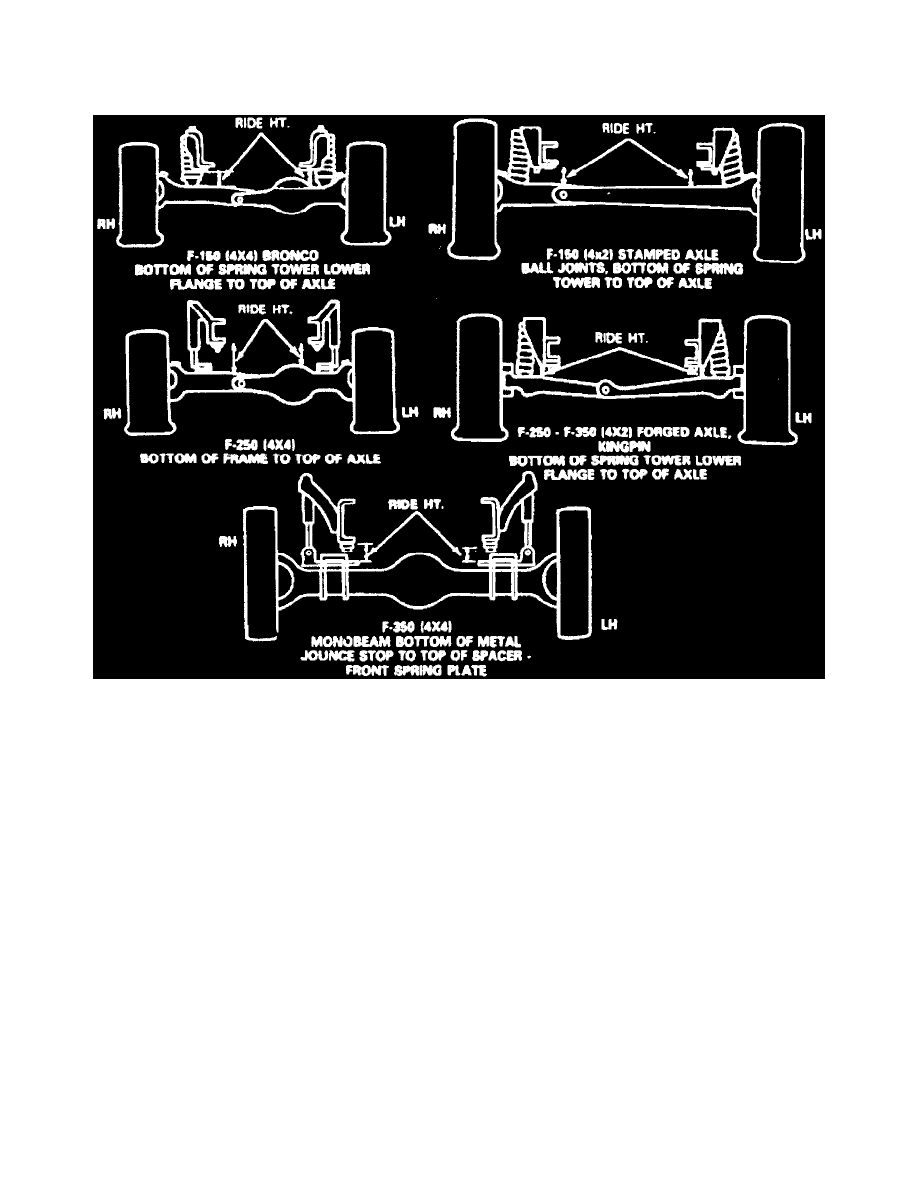F 250 2WD Pickup V8-7.3L DSL Turbo VIN F (1994)

Alignment: Service and Repair
Ride Height
1. Prior to checking caster and camber, ensure vehicle front ride height is within 0 - 3/8 inch higher than the right side ride height
a. If the vehicle ride heights are not within specifications, redistribute load on loaded vehicles or slightly load empty vehicles on one side.
b. If the ride heights cannot be brought within specifications, verify correct spring installation.
c. The ride height variations stated are for checking purposes only. The vehicle does not have to operate within these specifications.
d. Check and correct as necessary all tire inflation pressures, then check front tires for the same size, ply rating and load range. Check front wheel
bearings and adjust as necessary.
2. If all the above checks have been made, check wheel alignment with suitable alignment equipment.
3. Using the ride heights obtained earlier, compare caster and camber readings to those listed in the Wheel Alignment Specifications.
4. If the caster and camber angles exceed the specifications, inspect front end for damaged suspension components. Replace as necessary.
NOTE: Alignment equipment indicates a true reading only when the vehicle's frame is horizontal. Therefore, if the frame is not level (due to tire,
spring or load differences), the caster angle reading must be modified to compensate for the frame angles. If the front is higher than the rear,
subtract the amount of angle from the reading. If the front is lower than the rear, add the angle. To check frame angle, use a spirit protractor, and
take the frame angle measurement on the lower frame flange at the flat area immediately adjacent to the rear spring front hanger.
